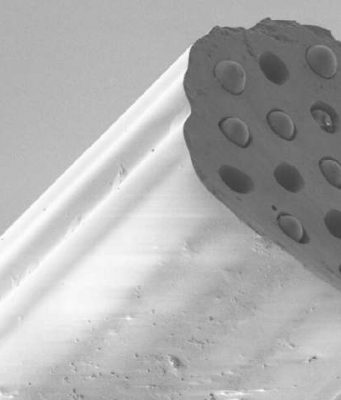Fuel cells have the potential to be a clean and efficient way to run cars, computers, and power stations, but the cost of producing them is limiting their use. That's because a key component of the most common fuel...
Northwestern University researchers have developed a first-of-its-kind technique for creating entirely new classes of optical materials and devices that could lead to light bending and cloaking devices -- news to make the ears of Star Trek's Spock perk up.
Using...
In an advance that could push cheap, ubiquitous solar power closer to reality, University of Michigan researchers have found a way to coax electrons to travel much further than was previously thought possible in the materials often used for...
Engineers worldwide have been developing alternative ways to provide greater memory storage capacity on even smaller computer chips. Previous research into two-dimensional atomic sheets for memory storage has failed to uncover their potential -- until now.
A team of electrical...
Nature has produced exquisite composite materials--wood, bone, teeth, and shells, for example--that combine light weight and density with desirable mechanical properties such as stiffness, strength and damage tolerance.
Since ancient civilizations first combined straw and mud to form bricks, people...
Researchers at the Laboratory of Organic Electronics, Linköping University, have developed the world's first complementary electrochemical logic circuits that can function stably for long periods in water. This is a highly significant breakthrough in the development of bioelectronics.
The first...
A new 3D printing technique allows researchers to replicate biological structures, which could be used for tissue regeneration and replica organs.
Imperial College London researchers have developed a new method for creating 3D structures using cryogenics (freezing) and 3D printing...
Professor Kyung Cheol Choi from the School of Electrical Engineering and his team succeeded in fabricating highly efficient Organic Light-Emitting Diodes (OLEDs) on an ultra-thin fiber.
The team expects the technology, which produces high-efficiency, long-lasting OLEDs, can be widely utilized...
In the basement of the Engineering Center at the University of Colorado Boulder, a group of researchers is working to create the next generation of robots. Instead of the metallic droids you may be imagining, they are developing robots...
Iowa State University plant scientist Patrick Schnable quickly described how he measured the time it takes for two kinds of corn plants to move water from their roots, to their lower leaves and then to their upper leaves.
This was...
Etched pillars define the positions of quantum dots (red puddles) arranged in an hexagonal lattice. When the spacing between the quantum dots is sufficiently small, electrons can move between them.
Credit: Diego Scarabelli/Columbia Engineering
Researchers at Columbia Engineering, experts at manipulating...

















